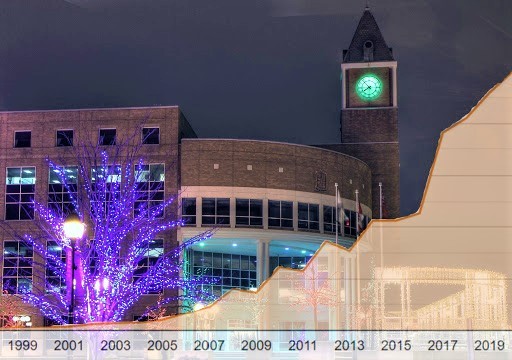
Brampton councillor to demand staff explain out-of-control salaries for managers & directors
Inside Brampton City Hall, the money tap is running. Against a backdrop of three consecutive property tax freezes, salaries and perks for City staffers have flowed freely.
Under Mayor Patrick Brown, who has cancelled or postponed hundreds of millions of dollars in investments for the City to achieve the tax freezes he demands, non-union salaries have gone in the opposite direction, skyrocketing since his election. The pattern of lavish spending on senior staff under Brown has continued even during the pandemic, while thousands of Brampton taxpayers have struggled to make ends meet.
The 2020 public sector salary disclosure list, also known colloquially as the “sunshine list”, has a record number of entries for Brampton employees. Last year, 1,002 employees in Brampton earned more than $100,000, up from 919 in 2019 and a dramatic increase from 426 in 2015, the year Jim McCarter, who was hired as an interim auditor general for the City of Brampton to conduct a financial analysis, warned that staff salaries were spiralling out of control.
“I believe there are some financial storm clouds on the horizon and some difficult decisions may be necessary,” he wrote in his revealing January 2015 report.
McCarter’s analysis of Brampton’s financial fortunes zeroed in on staffing costs as a key problem, noting two-thirds of every dollar spent on City operations was dedicated to salaries. The audit found over 90 percent of property tax revenues each year went to funding payroll costs, and spending on large non-union salaries was a particular problem.
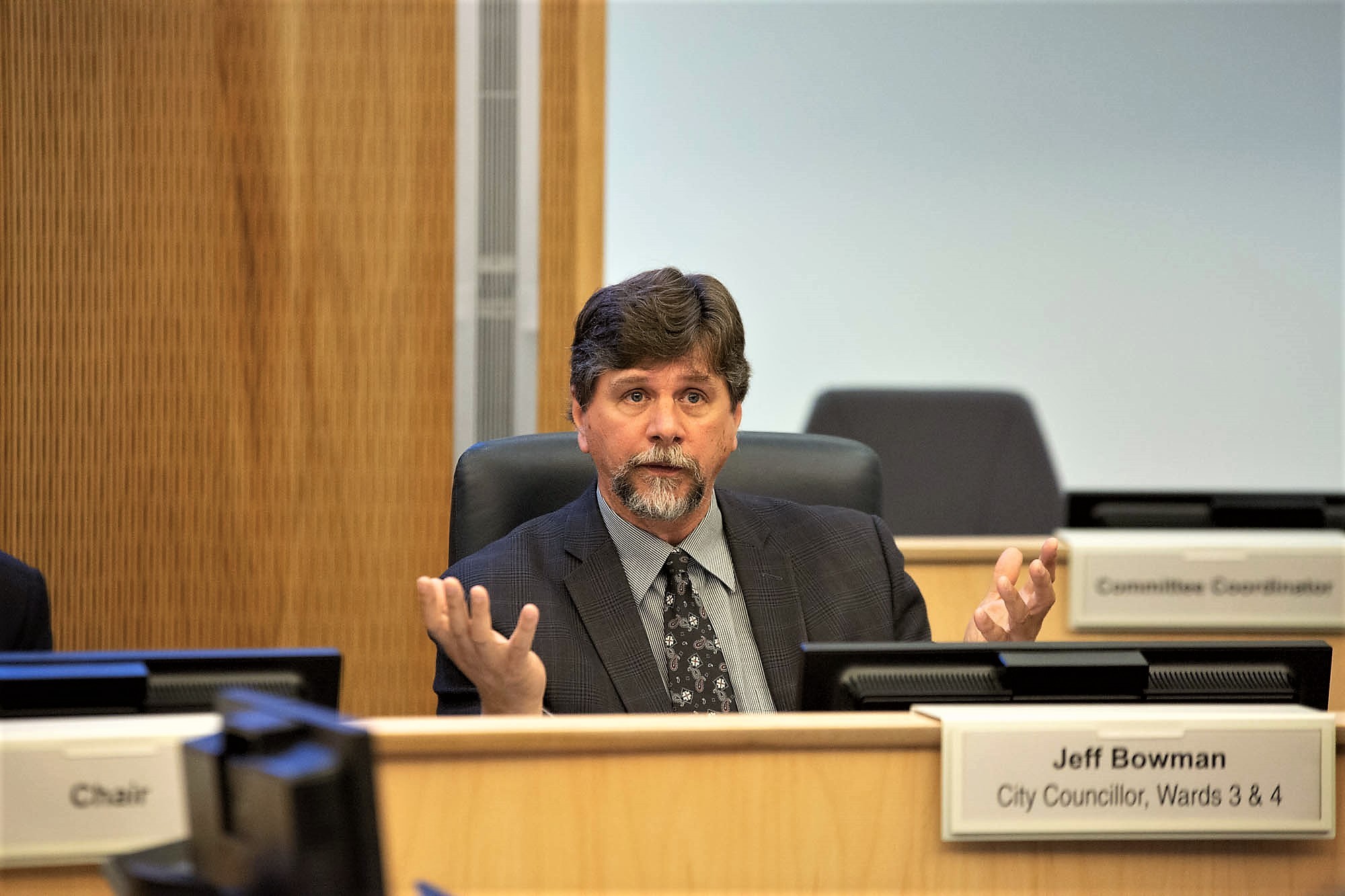
Brampton Councillor Jeff Bowman wants details on senior staff pay and bonuses in recent years
“Managing the growth in operating expenses and especially in the City payroll is something that Council and City management will need to pay increasing attention to if they are to make any significant headway in improving annual operating results and replenishing City reserve levels, unless they plan on relying almost entirely on property tax increases,” McCarter added.
While Brampton’s senior staff have enjoyed salaries that have far outpaced the private sector and even those at the provincial and federal government level, the city’s pressing needs have been neglected.
The infrastructure gap was about a quarter of a billion dollars in 2019 and was projected to reach around three quarters of a billion dollars by 2027.
In the three budget cycles since Brown took the helm, the City has done the opposite of what McCarter advised. The number of staff earning more than $100,000 per year has more than doubled in five years and, since 2018, taxes have remained frozen.
Brown’s approach to spending the taxpayers’ money is akin to a financially struggling household that refuses to pay for needed repairs and upgrades like a new roof or furnace, while the parents give the money manager at their bank even more compensation to look after their dwindling resources.
This irresponsible approach to operating expenses means the storm clouds McCarter predicted are darkening above City Hall.
Instead of getting a handle on ballooning staff costs, Brown and his controversial CAO, David Barrick, have spearheaded damaging cuts to the City’s capital budget.
Barrick was hired for the City’s top job despite having no experience running even a city department, much less the ninth largest municipality in Canada. He was implicated by the Ontario ombudsman in a fraudulent Niagara Region hiring scandal before he was fired from the local conservation agency following reports of widespread mismanagement and financial irregularities when he briefly ran the organization.
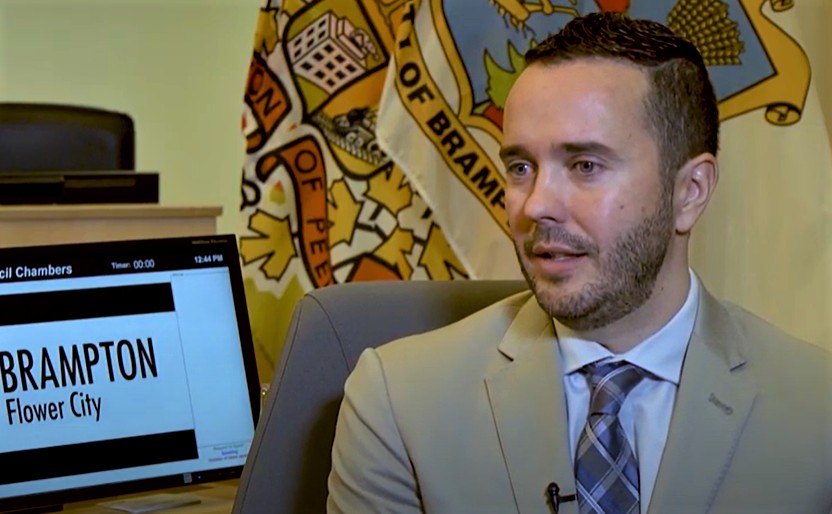
Controversial Brampton CAO David Barrick is responsible for senior staff pay and bonus increases
Niagara councillors questioned how Barrick was managing the conservation authority’s budget, after he made a number of questionable promotions and handed out lavish perks like expensive vehicle allowances, paid for by taxpayers.
Now, under his watch, salaries and benefits for senior staff in Brampton are exploding as the City’s infrastructure is starved of dollars.
After a bombshell set of allegations against Barrick by a now former senior staffer (the CAO fired her hours after she publicly shared her allegations) who accused him of widespread corruption, Council voted to investigate his conduct and members of the public have demanded Barrick be fired.
Several high profile projects have been left to suffer under his watch. A vital third transit storage facility was recently funded by the provincial and federal governments after Barrick and Brown pulled the money from the City budget claiming the move was to secure an electric facility, but a $150 million request to make it suitable for electric buses remains unfunded. Brampton was given $38 million by Ottawa to help rejuvenate its flagging downtown, suffering from underinvestment and a flood plain designation, but the City has yet to find funds for its portion. Plans pushed by provincial transit agency Metrolinx for a bus rapid transit corridor along Queen Street represent a vital growth project but, again, Brampton has not worked out how to pay for it.
One of the biggest complaints by taxpayers and downtown businesses was Brown’s decision to suddenly postpone the Downtown Reimagined project immediately after his election.
The City’s share of the plan for a complete makeover of the withering downtown area, in partnership with the Region of Peel, could have reached as much as $50 million.
It was supposed to be completed this year. Instead, Brown has failed to explain why he continues to ignore the badly needed investment, and on Friday he added an item to this week’s Council agenda calling on the Region to postpone its upcoming downtown subsurface infrastructure work (repairs and upgrades to sewer and water mains are long overdue) that is moving forward, after Brown postponed the project two-and-a-half-years ago.
In the meantime, senior staff salaries inside City Hall, coupled with an expensive revolving door of hirings and firings, are increasing at an alarming rate. Brampton Wards 3 and 4 Councillor Jeff Bowman has seen enough and, on Wednesday, will move a motion ordering staff to complete a detailed analysis of the City’s payroll.
He told The Pointer he intends to rein in “the escalating salaries for the non-union salaried individuals who appear on the 2020 Sunshine list.”
Bowman says the $100,000 starting point for the province’s annual public sector salary list should be raised in the future, as the baseline to show excessive spending has increased with inflation.
“That being said, it still represents a very good salary position for those who earn it compared to the Ontario average salary, and I don't begrudge anyone who has worked hard over several years and has earned merit increases. We have some fantastic people managers at the City.
“My issue is with what to me seems like an escalation of salaries far above the cost of living. Everyone deserves a cost of living increase, and it's understood that it allows them to keep pace with inflationary pressures. I have seen in some instances increases double and triple the COL, and higher, as well as what appears to be an increase in the number of people managers combined with a decrease in the number of reports to those managers.”
Bowman said he will demand a full accounting of non-union staff spending at Wednesday's Council meeting. “We are getting reports back on organizational separation costs and new recruitment costs. The third piece that is missing to complete the puzzle is the salary costs of managers, advisors and directors. I will be asking for a report detailing all non-union salaried employees on the 2020 Sunshine list, their position, their salary history of the past few years, and the percentage of increase over those years. It's understandable to some degree if positions change as do responsibilities, however it will tell us if, as the McCarter Report suggested in last council, if we have been successful in reducing the high percentage of incoming revenue used to pay management and salaries. If this isn't the case, we need to be transparent about it to the residents, and justify to them why this is.”
Of the top 20 earners on Brampton’s 2020 sunshine list, seven have left the City in a stream of workplace changes under Barrick. The top two earners on the list, Al Meneses and Harry Schlange, are no longer with the City and still managed to earn $656,397.82 between them in 2020 because of severance costs. This is hitting taxpayers hard, with the 2020 sunshine list including significant payments to a former CAO, a former acting CAO (Joseph Pittari) and Barrick, the current boss, who earned $322,000 in salary and benefits last year, despite having zero experience in municipal government. He was hired by Brown, who oversaw the committee that recommended Barrick. They have numerous connections through Conservative political circles.

Financial storm clouds are gathering over Brampton City Hall as salaries increase
Under Barrick, a slew of senior staff have packed up their desks and moved on — this overhaul of senior management has not been cheap.
Under Brown, the City hired Richard Forward from The City of Barrie, where Brown had served on council and was a former MP. As commissioner of planning for Brampton, Forward earned almost $235,000. The man who had the same position before Brown’s arrival, Rob Elliott, made $201,000 in 2018. This represents a 17 percent increase.
The current director of Economic development, Clare Barnett, made almost $198,000 in salary and benefits in 2020, compared to the $161,700 earned in 2018 by Bob Darling, who held the same position, on top of overseeing the entire culture division (which included overseeing the City's three theatres, its tourism operation and all City-run events). Darling was let go in 2019. Barnett received a 23 percent increase from what was paid to Darling, despite her much smaller role.
Barnett’s $17,300 taxable benefit in 2020 could be for a vehicle allowance, something Darling, whose taxable benefit in 2018 was just $760, never received. It’s a pattern under Barrick’s role as CAO, who can give city staff such perks without getting approval from council members.
It’s unclear why the City would have been handing out lavish benefits, possibly for taxpayer-funded cars, during the pandemic, when so many residents have struggled to make ends meet and while senior staff have not even worked at City Hall, staying at home throughout most of the emergency.
Bowman told The Pointer he wants to find out what bonuses have been paid out to senior staff over recent years and, particularly, last year during the pandemic.
James Macintyre, former director of purchasing, departed City Hall in the spring of 2020 and saw his sunshine list entry increase dramatically last year. In 2020, his salary was 13 percent higher than the previous year, with the former staffer earning $197,696.52 the year he left. Similarly, Katherine Kulson, former chief information officer, saw her pay increase 16 percent ($29,281.81) last year and is no longer employed by the City. It’s likely these extra costs to the taxpayer were for severences, as the revolving door under Barrick and Brown continues.
Looking at City Hall and analyzing the remaining senior staff, significant pay increases have also been enjoyed by many who have been with the City for years.
Alex Milojevic, general manager of transit, is the eighth best paid staffer on the 2020 list, and third highest still employed by the City. Over the past four years, he has been rewarded with handsome pay increases, well above the rate of inflation. Between 2017 and 2018, his salary rose seven percent, increasing a further four percent the following year.
In 2020, during the pandemic, Milojevic received an extra $23,426.31, an increase of almost 12 percent. The latest pay bump means Brampton’s general manager of transit earns just $8,069.86 less than the City of Toronto’s general manager of transportation services, a staffer charged with operating a transit network of street cars, subways and the largest electric bus fleet in North America.
Bowman wants to know why certain senior staff appear to be getting increases that are not in line with the council-approved salary grid and bonus formula, which is supposed to prevent excessive increases on the backs of unwitting taxpayers.
Peter Fay, Brampton’s City Clerk, has also seen his salary continue to rise well above the rate of inflation. His most recent pay rise totalled more than $10,000 (five percent) and means he now out-earns Toronto’s City Clerk. In Toronto, John D. Elvidge earned $202,745.12 last year (he moved into the job on an interim basis late in the year) compared to the $212,556.33 paid to Fay.
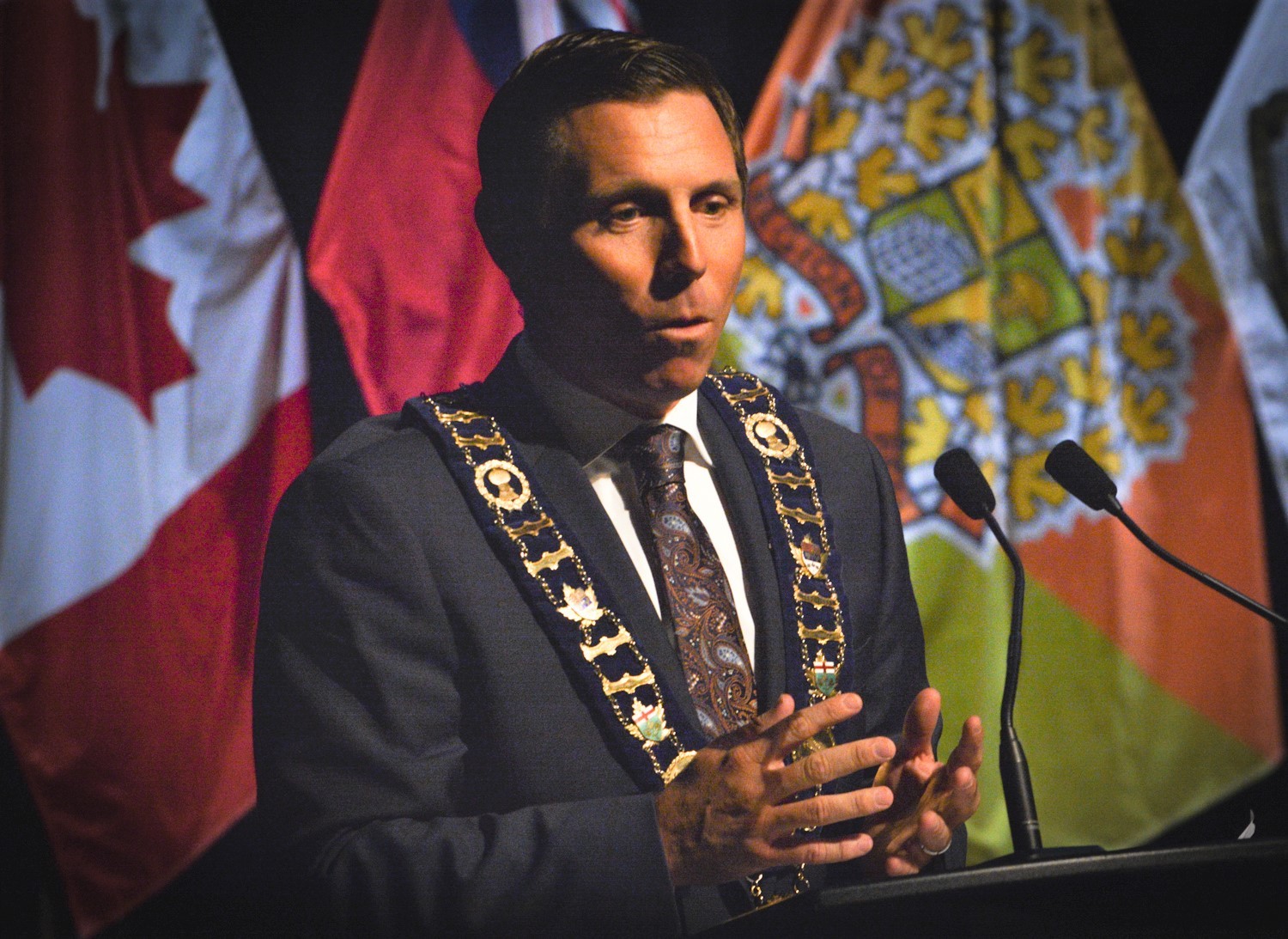
Patrick Brown, a fiscal conservative, demanded three consecutive tax freezes but allowed senior staff salaries to balloon out of control.
When combined, the pay increases for Brampton’s best paid bureaucrats are significant. Between 2019 and 2020, the top 20 entries on the sunshine list were paid a combined $553,445.72 more than what they received the year before. Severences were likely a part of this significant cost to taxpayers.
Brampton’s leadership team of seven department heads and one CAO saw a total increase of $179,294.93. This figure does not include Barrick, Michael Davidson (commissioner of corporate support services) or Marion Nader (commissioner of community services) who do not have entries for either 2019 or 2020, because their employment began partway through one of those years.
The generous salaries for staff at the City of Brampton sit in stark contrast to the reality residents in Peel face. The pandemic has battered local businesses, many of which have been closed almost continuously since last November.
According to the Region of Peel, 33 percent of all residents aged 15 to 24 were unemployed at the end of 2020, up from 9.2 percent at the end of 2019. At 12.8 percent, Peel’s overall quarterly average unemployment rate was the highest fourth-quarter overall unemployment rate recorded since Peel-specific quarterly data became available in 2003.
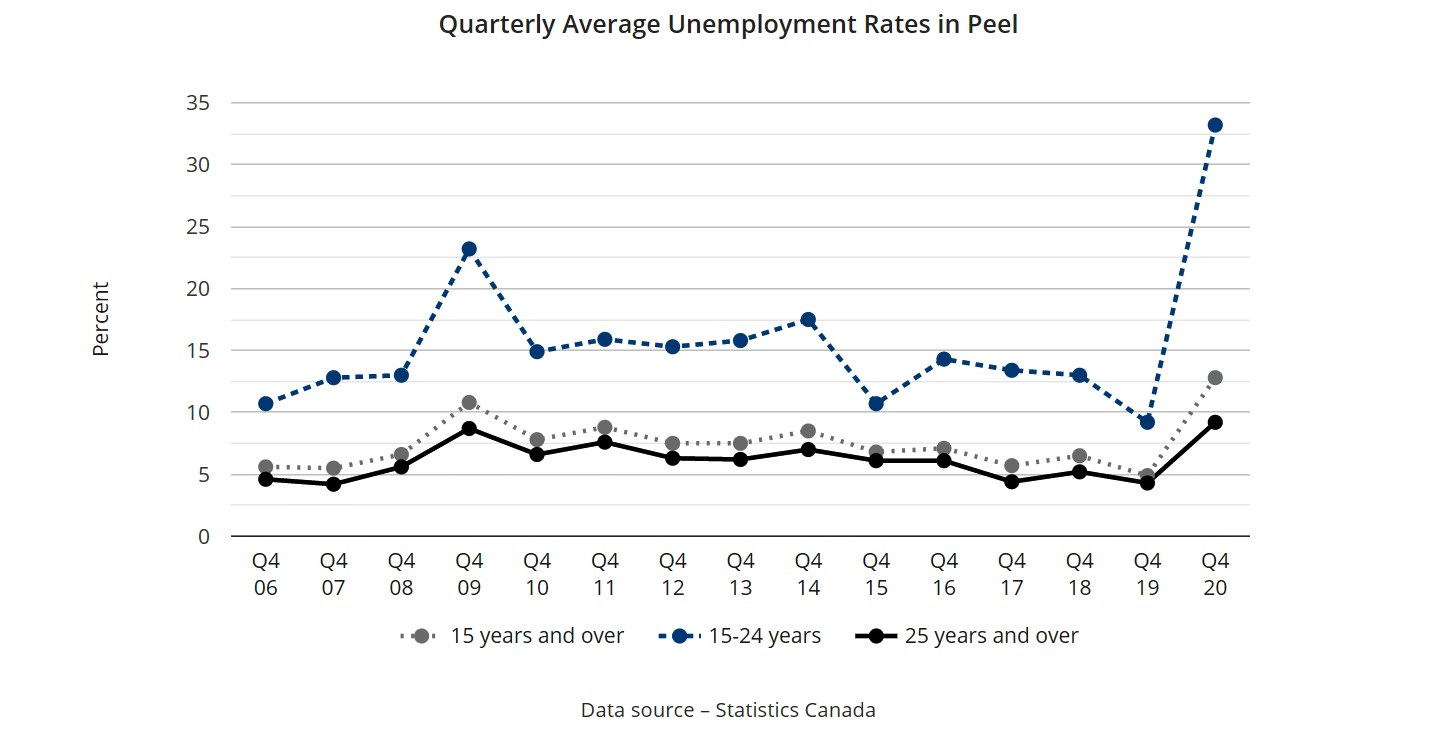
Unemployment in Peel is at record levels, while taxpayer dollars are spent on handsome senior staff pay increases inside Brampton City Hall.
Since taking over as CAO, Barrick has made a number of controversial hires with links to his past. Jason Tamming (director of communications) and Robert D'Amboise (assistant director of corporate projects and liaison) are the two most closely linked to Barrick’s troubling history in Niagara. They both were found by the Ontario Ombudsman to have behaved fraudulently in the CAO hiring process, secretly providing interview questions and answers to the preferred candidate.
D'Amboise, who joined the City last year, does not yet feature on the sunshine list and Tamming only has one entry at $171,071.99 last year.
Barrick, D’Amboise and Tamming were all implicated in the damning 2019 “Inside Job” investigation report by the Ontario Ombudsman, who probed the hiring of former Niagara Region CAO Carmen D’Angelo. Barrick had attempted to pressure senior staff there to hire his boss at the conservation agency, in exchange for influence.
Tamming is also one of the names featured at the top of Brampton’s list of payments sorted by taxable benefits. Fifteen individuals inside City Hall took home more than $10,000 in taxable benefits last year, including Barrick, Brown and Tamming.
The benefits in Brampton are particularly out of line with neighbouring cities. It is unclear from the sunshine list exactly what the perks include, but Bowman’s request to staff Wednesday could shine some light on the expensive payments.
As CAO, Barrick was rewarded with $20,481.55 in taxable benefits, outstripping the $16,371.38 Toronto’s City Manager, Chris Murray, was granted. It was also higher than the $13,676.40 Mississauga’s CAO, Paul Mitcham, received.
Most council members inside City Hall, including Brown, seem unconcerned about the ballooning costs for senior staff. During the 2021 budget process, Councillor Pat Fortini, supported by Councillor Martin Medeiros, put forward a motion suggesting a salary freeze for senior staff. They received limited support from their council colleagues and the motion failed.
Bowman will see on Wednesday if his colleagues are ready to step up to the plate and back his quest for further information on City Hall’s troubling trend under Brown and Barrick.
Warnings about excessive spending on labour costs were made clear in the 2015 report.
“While the City’s significant growth over the past 10 years has resulted in an increase of 120 percent in property tax revenue, virtually all of this extra revenue has gone to fund the increase in the City payroll over the same time period,” McCarter’s report states.
When the interim auditor general wrote those words in 2015, the faucet was already flowing. Now, six years later, taxpayer dollars are going into the personal accounts of senior staff like never before.
Email: [email protected]
Twitter: @isaaccallan
Tel: 647 561-4879
COVID-19 is impacting all Canadians. At a time when vital public information is needed by everyone, The Pointer has taken down our paywall on all stories relating to the pandemic and those of public interest to ensure every resident of Brampton and Mississauga has access to the facts. For those who are able, we encourage you to consider a subscription. This will help us report on important public interest issues the community needs to know about now more than ever. You can register for a 30-day free trial HERE. Thereafter, The Pointer will charge $10 a month and you can cancel any time right on the website. Thank you.
Submit a correction about this story


